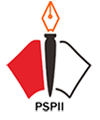INFLUENCE OF TRAINING SPIRITUAL LEADERSHIP AND CLIMATE OF WORKING ON THE EMPLOYEES PERFORMANCE IN OFFICE EDUCATION PROVINCE OF LAMPUNG
DOI:
https://doi.org/10.15575/jpi.v2i1.698Keywords:
Leadership, Climate of Work, Employee PerformanceAbstract
The leadership and the atmosphere in the working environment within the organization as a manager and leader of an organization have a very big role in creating a conducive and innovative working environment. Therefore, this study investigates leadership and working climate influencing on employee performance of Lampung Provincial Education Office. It uses a quantitative approach and descriptive survey method. Based on data analysis, the results are as follows: first, in general the results of data analysis showed that the leadership, the climate of employee and employee performance Education Office of Lampung Province is categorised as middle/enough, it means that the leadership, work climate and employee performance still need to be improved. Based on the results it can be argued that in order to improve the performance of employees can be done through visionary leadership, hard work, perseverance, steel service and discipline as well as to create a conducive working environment.
References
Al-Ghazali, Abu Hamid Muhammad., (2005).Ihyâ’ ’Ulûm al-Dîn. Dâr al-Ihyâ’ al-Kutub.
Anoraga, P., (2001). Work Psychology. (Edition 3). Jakarta: Rineka Reserved.
As'ad., (1999). Industrial Psychology. Yogyakarta: Liberty
Buchari, Zainun., (1989), Management and Motivation. Jakarta: Civic Literacy
Chatab, Nevizond., (1987). Guide Implementation and Certification of Quality Management System ISO 9001-2001. Jakarta: Elex Media Komputindo
Conger, J.D., (1996). Creativity and Innovation in Information System Organization. Danvers MA: Boyd and Fraser Publishers.
Danim, Sudarwan., (2013). Educational Leadership: Leadership genius (IQ + EQ), Ethics, Conduct a motivational and Mito. Alfabeta: Bandung.
Davis, Keith and John W. Newstrom., (1996).Human Resources and Personal Management. Singapore. Mc-Graw-Hill Book.
Desler,Gary., (1997), Human Resource Management (Interpretation Benjamin Molan). Jakarta: PT Gramedia.
Gibson., (1990).Organizational Behavior and Management Structure and Processes (Interpretation Djoerban Wahid), Jakarta: Erland
Hadari, Nawawi and Hadari, Martini, (1992). Effective Leadership. Yogyakarta: Gadjah Mada University Press
Hanafi, et al., (1994).Total Quality Management of Higher Education: A Handbook For business to Enhance College. (Second printing). Jakarta: PT Domestic Cooperation Agency West Region Depdikbud RI.
Hasanah, Dedeh Sofia., (2010). Influence of Education Training (Diklat) Teacher Leadership, Working Climate and Elementary School Teacher Performance for BabakanCikao District of Purwakarta, (online), available: http // UPI.edu/Iklim Journal of Occupational and Teacher Performance.
Hasibuan, H, MalayauS.p., (2007). Human Resource Management. Jakarta: Earth Literacy.
Hoy, Wayne and Miskel, Cecil. G., (2001).Educational Administration, Theory, Research and Practice. New York: Random House
Isaksen, Scot G and Kenneth J.Lauer, et.al., (2003).Perception of the Best and Worst Climates for Creativity: Evidence for Preliminary Validation The Situational Outlook Questionnaire, Creativity Research Journal.vol.13 No. 2 from 2000 to 2001. pp 171-184, http.// www.cpsb.com/resources/diakses / public / SOQ CRJ Article.pdf, accessed 11 September 2003
Isaac Arep and Hendriheadland., (2003). Motivation Management. Jakarta: PT Gramedia
Kast. Fremont. E and Rosenzweig., (1982). Organization andManagement.Yasin translation. Jakarta: BinaAkasara
King, Niger and Anderson, Neil., (1995). Innovation and Change in Organizations. London: Routledge.
Riniwati, Harsuko., (2011). Boosting Motivation and Performance: Empowerment Approach. HR: UB Press.
Rival, Veithzal and Mulyadi, Deddy., (2012). Leadership and Organizational Behavior. Eagle Press: Jakarta.
Robbins.P., (2003). Organizational Behavior, Concepts and Applications. Jakarta: Gramedia
Stinger, Robert., (1984). Organizational Effectiveness.LPeS. Jakarta
Stoner, James AE and Edward Freeman R., (1992).Management. Prentice-Hall Inc.
Sugiyono., (2012). Statistics for Research. Bandung: Alfabeta.
Tampubolon, Daulat P., (1992). Higher Education Quality: New Paradigm of Higher Education Management Challenges Facing the 21st Century. Jakarta: GramediaPustakaUtama.
The Creative Problem Solving Group, CPBG, Inc., (2002). www.cpsb.com, accessed 10 July 2003.
Torang, Syamsir., (2013). Organization and Management (Behavior, Structure, Culture and Organizational Change). Alfabeta: Bandung.
Weihrich, H and Koontz, H., (1993). Management a Global Perspective Tenth Ed). New York. McGrow-Hill International Editions.
Indonesian Wikipedia., (2009). Leadership. Wikimedia Project.
Downloads
Published
Issue
Section
License
Authors who publish with this journal agree to the following terms:
- Authors retain copyright and grant the journal right of first publication with the work simultaneously licensed under a Attribution-ShareAlike 4.0 International (CC BY-SA 4.0) License that allows others to share the work with an acknowledgment of the work's authorship and initial publication in this journal.
- Authors are able to enter into separate, additional contractual arrangements for the non-exclusive distribution of the journal's published version of the work (e.g., post it to an institutional repository or publish it in a book), with an acknowledgment of its initial publication in this journal.
- Authors are permitted and encouraged to post their work online (e.g., in institutional repositories or on their website) prior to and during the submission process, as it can lead to productive exchanges, as well as earlier and greater citation of published work (See The Effect of Open Access).






